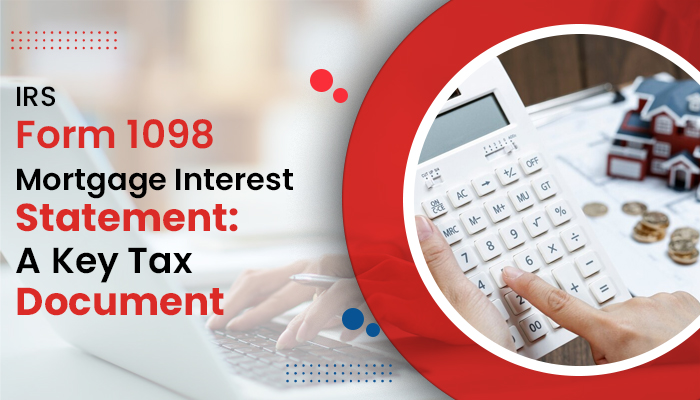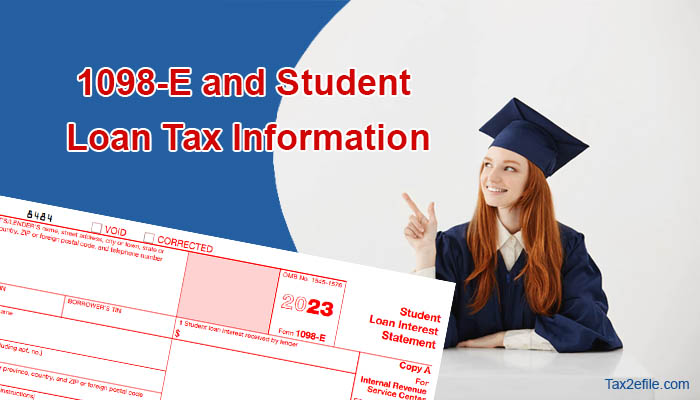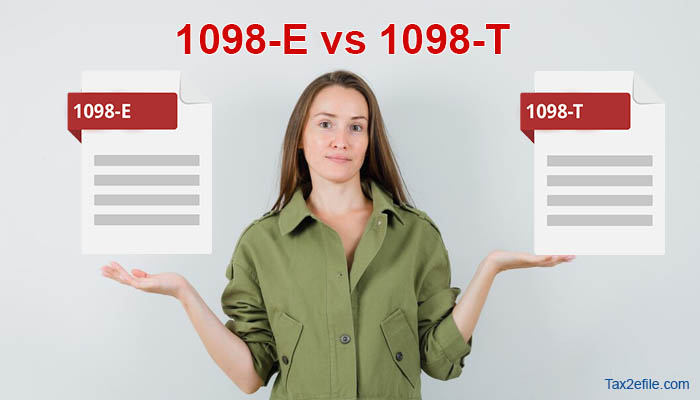- December 13, 2023

The IRS tax Form 1098 and its variants are used to report contributions and other tax-deductible expenses to the taxpayers and the IRS.
Lenders will use Form 1098 mortgage statement to report the amounts paid by the borrower, if it is $600 or more in interest and mortgage insurance premiums, during the tax year. Lenders will be required to file separate tax Form 1098 for each mortgage that they hold. The information given on this Form can be used for certain tax deductions that are related to interest and mortgage insurance premiums.
Table of Contents
Information Reported on IRS Form 1098
The following is the information reported by the taxpayer on Form 1098
- The name and address of the lender, phone number, and taxpayer identification number.
- The amount of mortgage interest received.
- Name, address, and TIN of the taxpayer.
- The origination date of the mortgage
- Refund of the overpaid interest
- Paid mortgage insurance premiums.
- The address or the description of the property
- The date the lender acquired the mortgage during the current year.
Lenders need to file Form 1098 Mortgage if they have received less than $600 in interest or as mortgage insurance premiums during the tax year. Also, the interest received from a partnership, corporation, estate, trust, company, or association does not require filing Form 1098. If the taxpayer buys a property with owner financing, the seller will not file Form 1098.
Who receives Form 1098?
The taxpayer is required to file Form 1098 if they have received $600 or more in interest or as points on the mortgage. Those who receive less than $600 will not receive Form 1098. Taxpayers can deduct these expenses on their income tax Form. Thus, it helps to reduce the taxable income and the overall tax amount that one owes to the IRS. Generally, Form 1098 mortgage is issued and mailed by the lender or any other entity receiving the interest amount. IRS also requires the mortgage lender to offer Form 1098 to the owner of real property, i.e., land and anything built on the land, grown on the land, or attached to the land.
Rules for deducting mortgage interest
Taxpayers should ensure that the interest they pay on a property should abide by the IRS standards for a home to be considered deductible. These standards also define the home as a space with basic living amenities, and thus, houses, mobile homes, boats, and house trailers qualify as homes.
In order to avail tax deductions on mortgages, the taxpayer has to ensure that the mortgage itself is qualified. Qualified mortgages include first and second mortgages, refinanced mortgages, and home equity loans. Filing a Form 1098 mortgage with the IRS will indeed cause a considerable reduction in the total taxable income. But there are a few rules that pertain to deducting mortgage interest.
The taxpayer should be the primary borrower of the load and should be making loan payments. They are limited to reducing interest on the mortgage debt of $750,000 or less. This is with respect to debt that originated on or after December 16, 2017. The older mortgage limit was $1,000,000. If all these rules apply, the taxpayer can file Form 1098 for the current tax year. If they have more than one qualified mortgage, they will receive separate Form 1098 for each mortgage.
IRS Form 1098: Streamlining Mortgage Deductions and Filing
Taxpayers need not include Form 1098 with their tax returns but use the information given on this Form to deduct their mortgage payment. They can choose to file the Form electronically with credible tax agencies like Tax2efile. This helps to file the Form with the IRS on time and without any errors.


